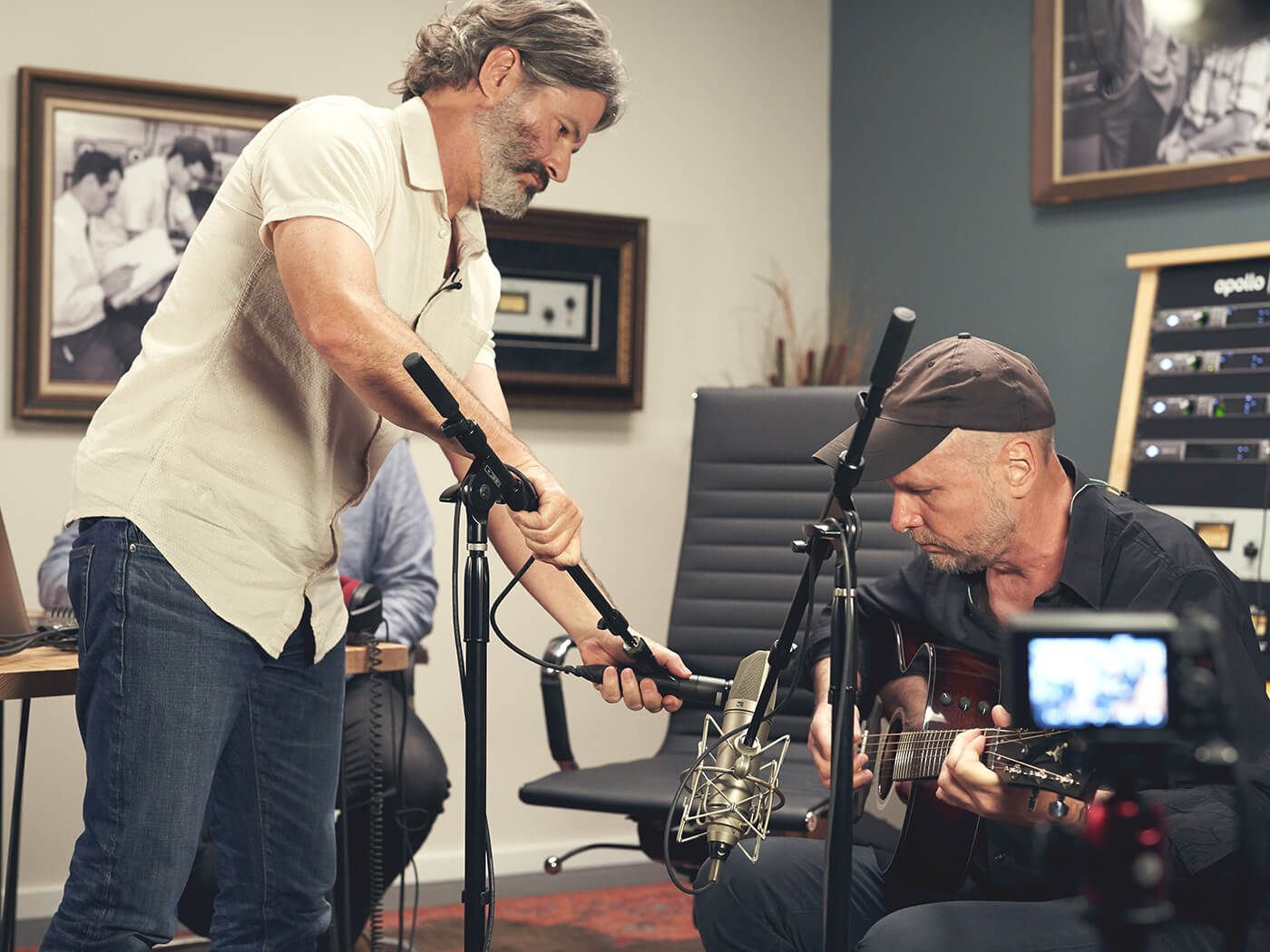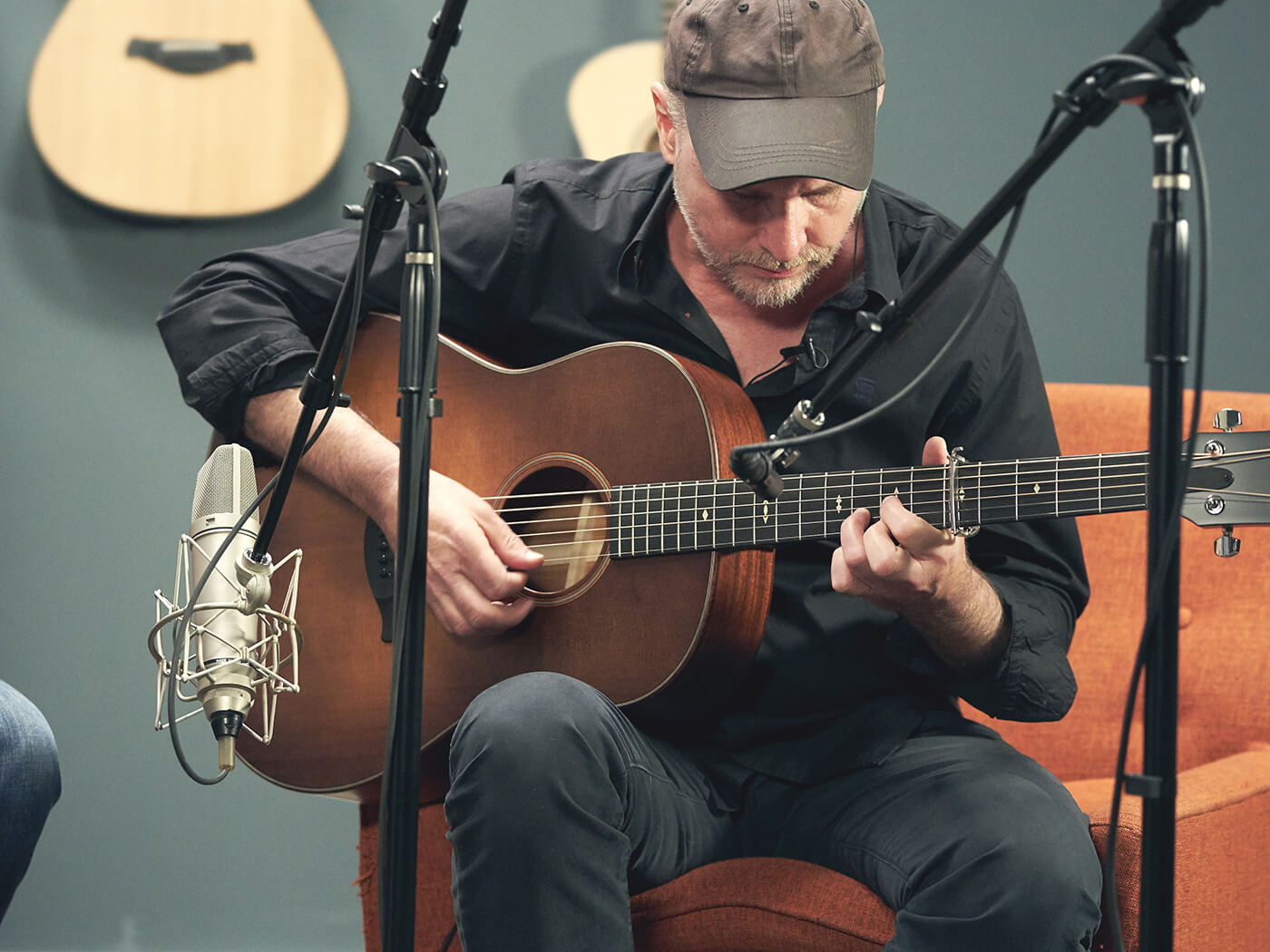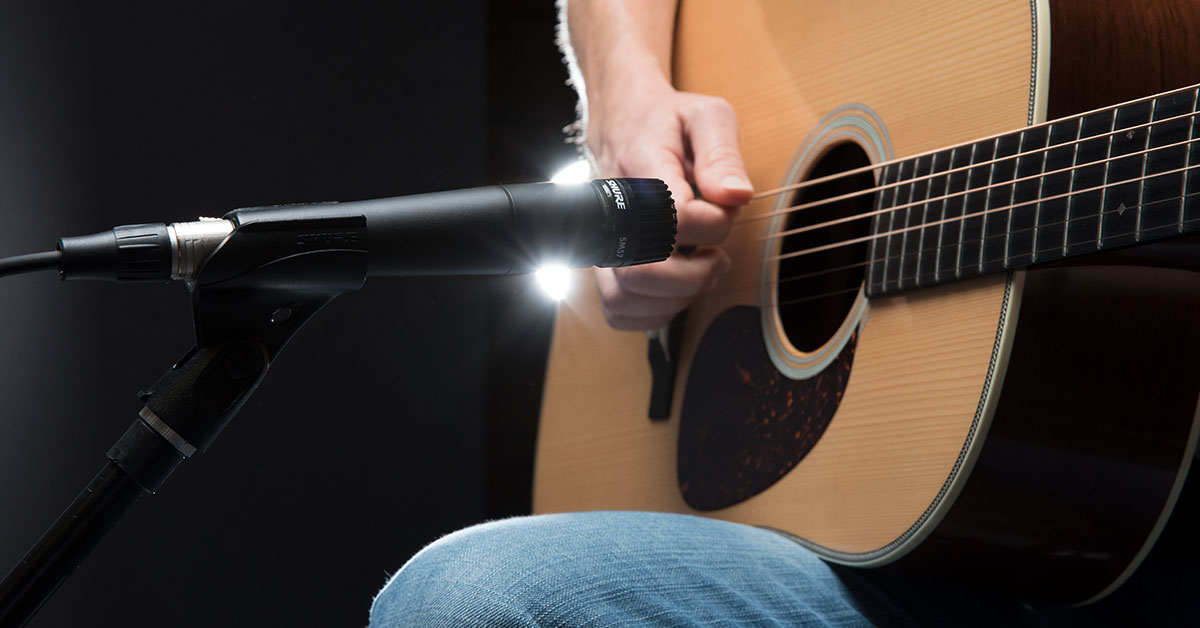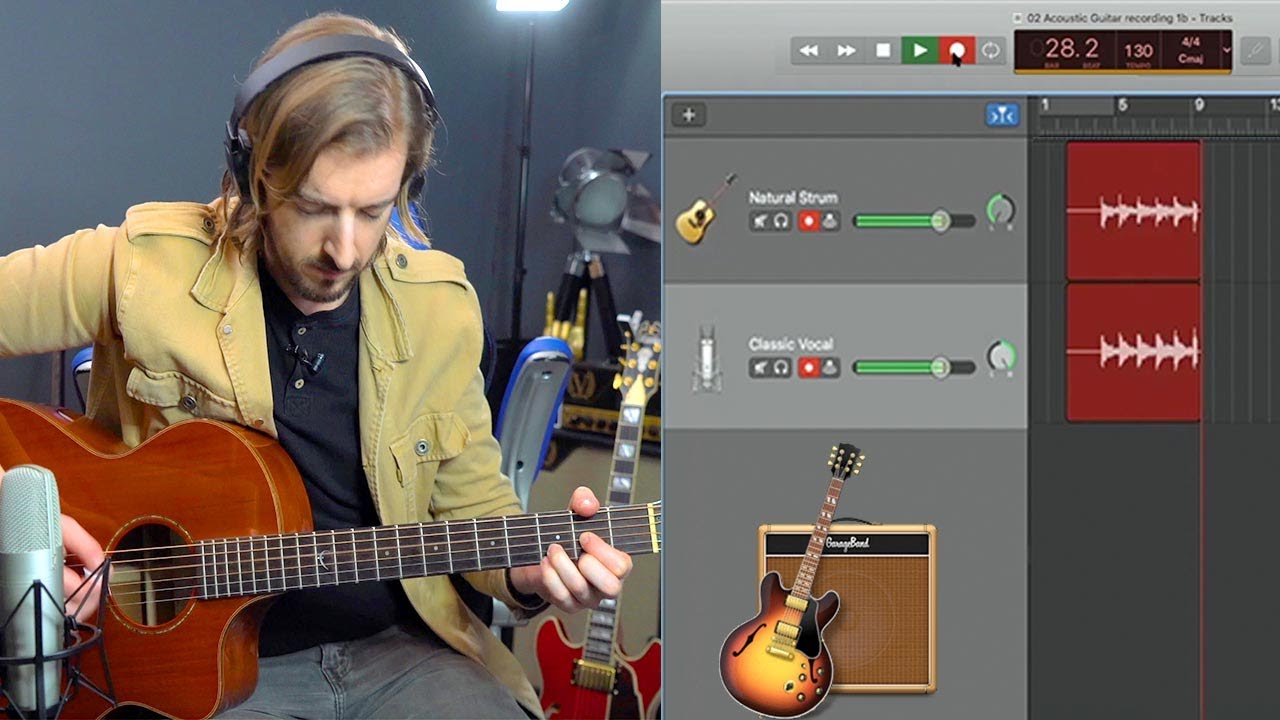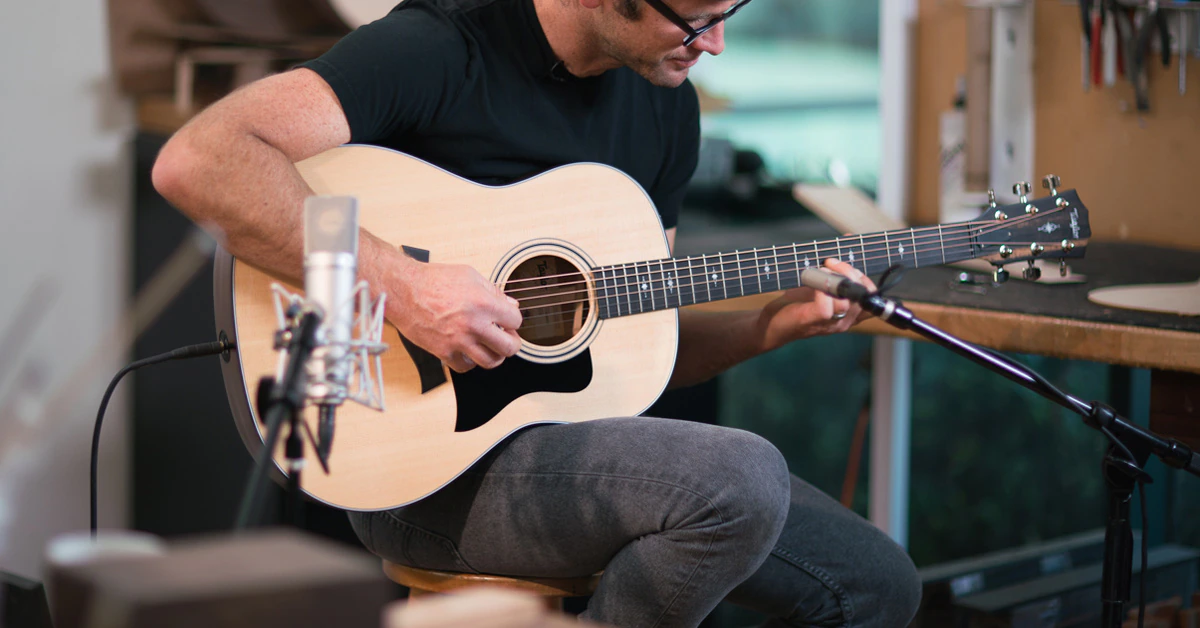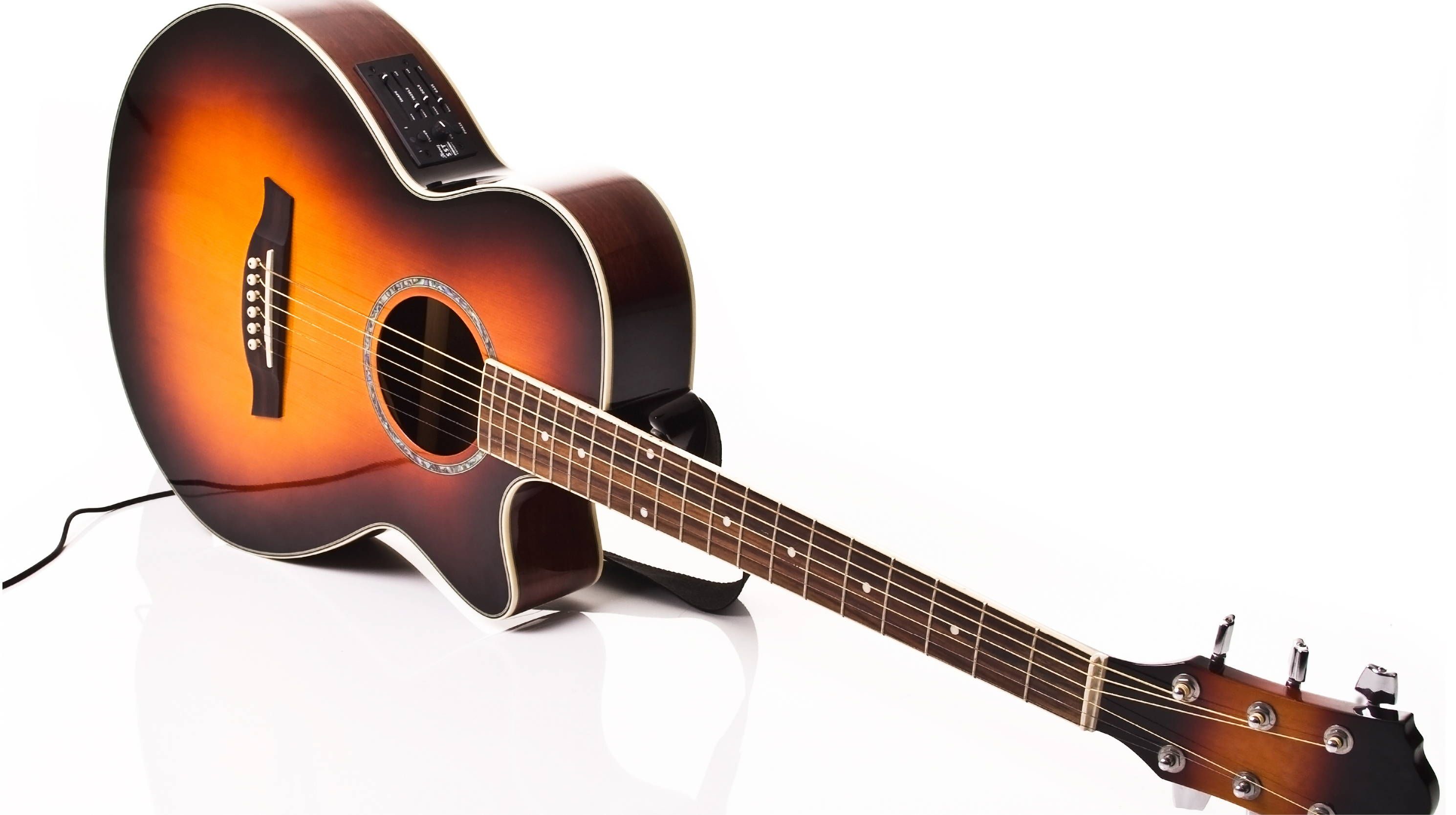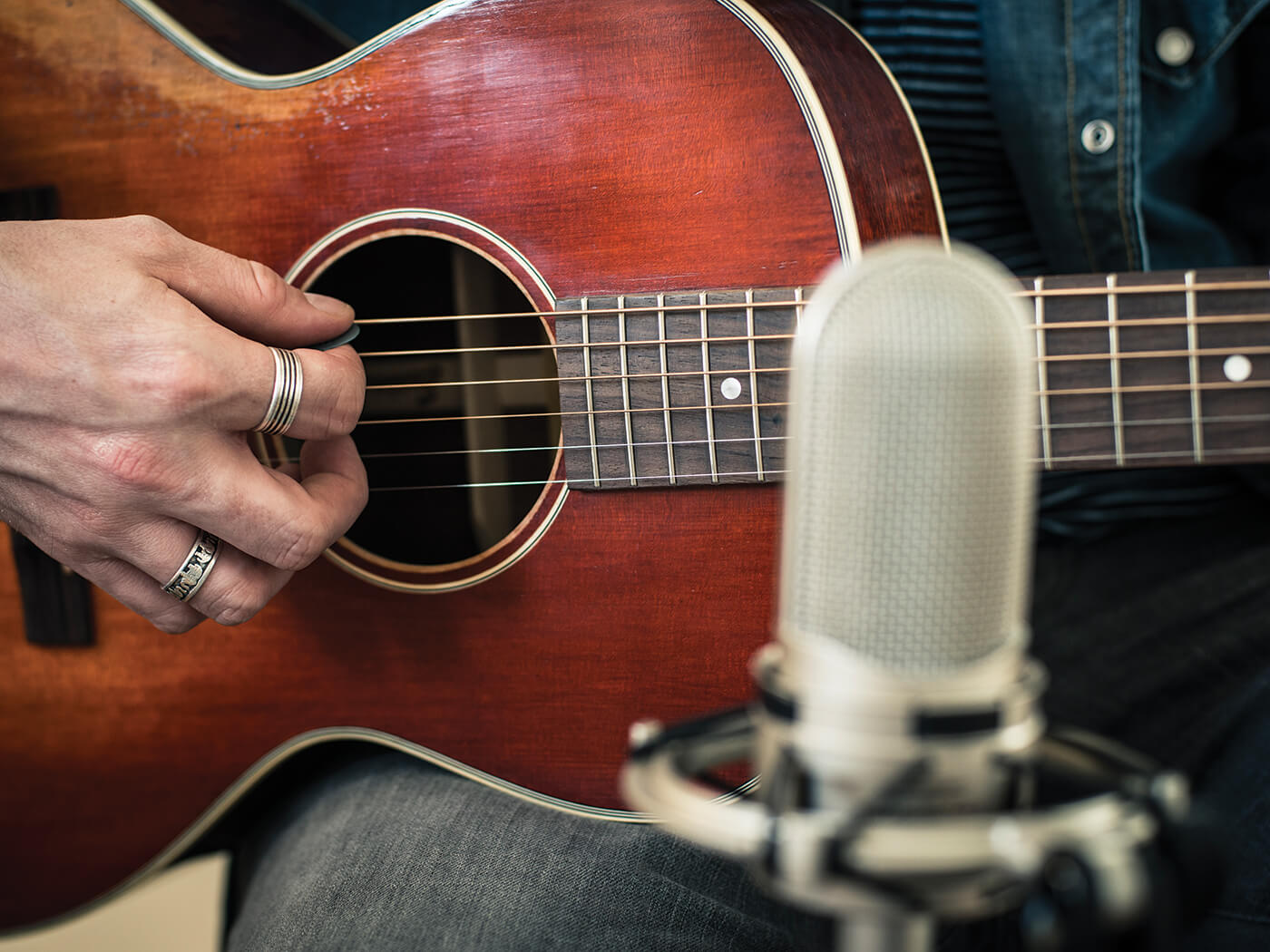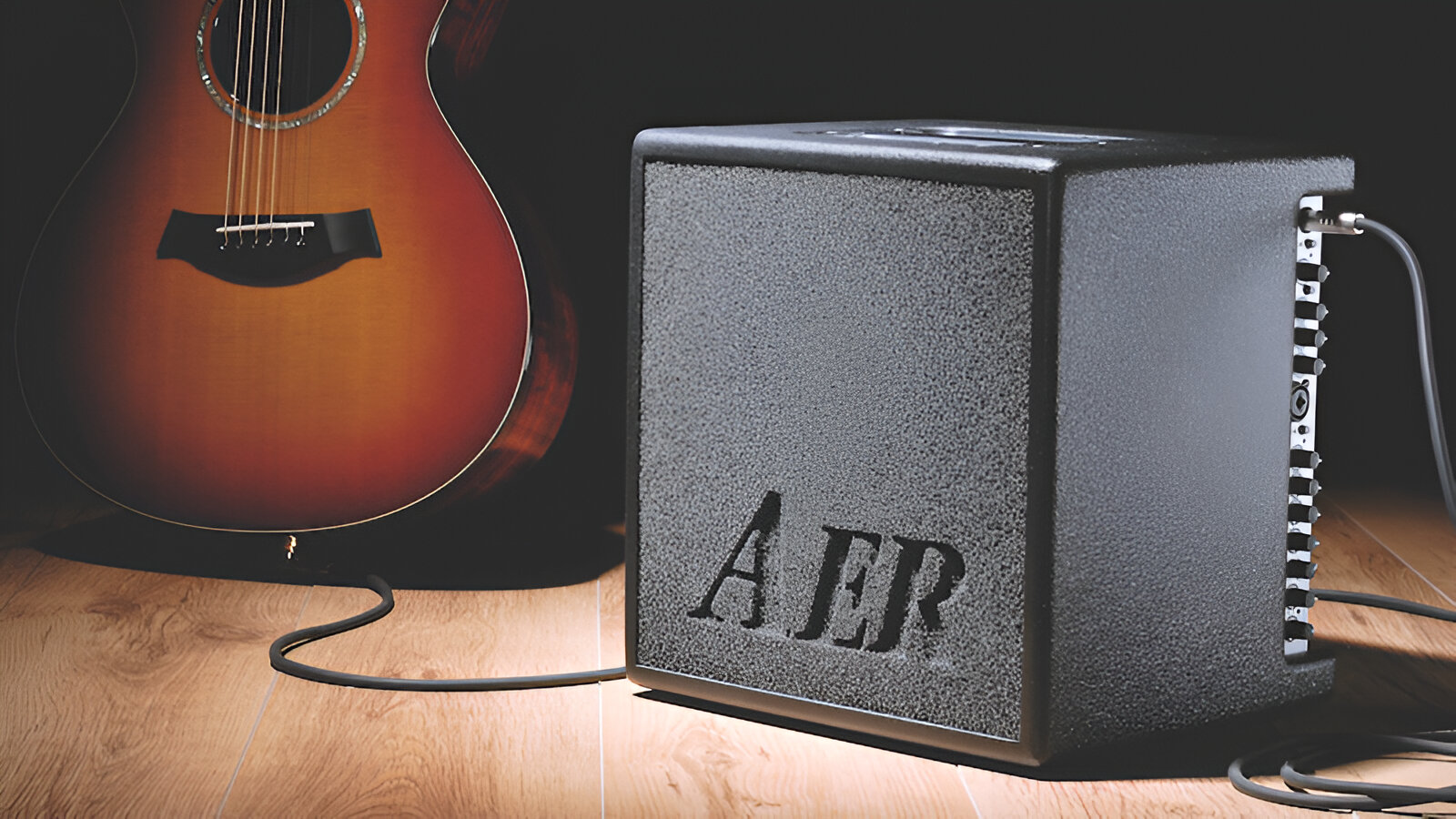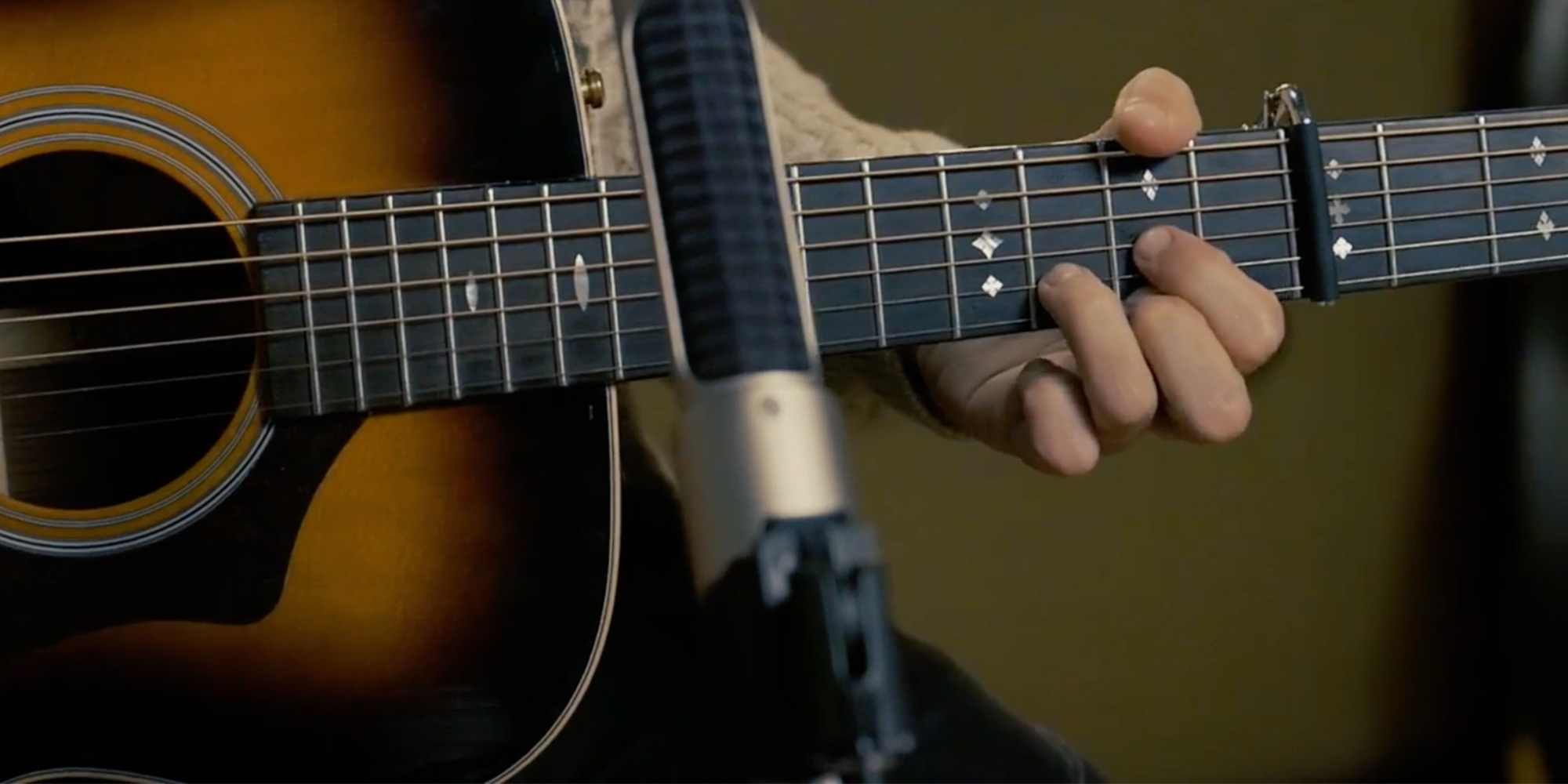Introduction
Recording an acoustic guitar can be a rewarding experience, allowing you to capture the rich, natural tones of this versatile instrument. Whether you’re a singer-songwriter looking to lay down some tracks, a producer aiming to add acoustic elements to a mix, or simply an enthusiast wanting to document your playing, knowing how to record an acoustic guitar effectively is essential.
Acoustic guitars produce a wide range of sounds, from delicate fingerpicking to robust strumming, and capturing these nuances requires careful planning and technique. In this guide, we’ll explore the essential steps to achieve high-quality acoustic guitar recordings, from selecting the right equipment to post-production editing.
By understanding the intricacies of recording an acoustic guitar, you can elevate the quality of your recordings and bring out the best in your performances. Whether you’re a seasoned musician or just starting, this guide will equip you with the knowledge and skills to create captivating acoustic guitar recordings that resonate with listeners.
Choosing the Right Equipment
When it comes to recording acoustic guitar, selecting the appropriate equipment is crucial for achieving professional-quality results. Here are the key components to consider:
- Microphones: A high-quality condenser microphone is often preferred for capturing the nuances of an acoustic guitar. Large-diaphragm condenser microphones are particularly well-suited for recording the instrument’s rich tonal characteristics. Additionally, small-diaphragm condenser microphones can be used to capture detailed fingerpicking and intricate playing styles. Experimenting with different microphone types and placements can help you achieve the desired sound for your recordings.
- Audio Interface: An audio interface serves as the bridge between your microphones and your recording device, such as a computer or digital recorder. Look for an interface with transparent preamps and high-quality analog-to-digital converters to accurately capture the subtleties of your acoustic guitar.
- Studio Monitors or Headphones: Accurate monitoring is essential for making informed decisions during the recording process. Invest in a pair of studio monitors or high-fidelity headphones to ensure that you can hear the true representation of your recordings.
- Recording Software: Choosing the right recording software, also known as a digital audio workstation (DAW), is essential for capturing, editing, and mixing your acoustic guitar recordings. There are numerous DAW options available, each offering unique features and workflows. Select a DAW that aligns with your recording needs and preferences.
- Room Treatment: Consider the acoustic characteristics of your recording space. Acoustic treatment, such as diffusers and absorbers, can help minimize unwanted reflections and create a more controlled recording environment.
By carefully selecting and investing in high-quality equipment, you can set the foundation for capturing the true essence of your acoustic guitar performances. Experimenting with different combinations of microphones, interfaces, and room setups can lead to discovering the perfect setup for your unique sound.
Setting Up Your Recording Space
Creating an optimal recording environment is essential for capturing the true character and resonance of an acoustic guitar. Consider the following factors when setting up your recording space:
- Room Selection: Choose a room with favorable acoustics for recording acoustic instruments. Spaces with minimal reverb and unwanted ambient noise are ideal. If possible, opt for a room with carpeting, drapes, and soft furnishings to help absorb sound reflections.
- Acoustic Treatment: If your recording space suffers from excessive reverberation or unwanted reflections, consider implementing acoustic treatment to improve the sound quality. This can include the strategic placement of sound-absorbing panels and bass traps to address specific acoustic issues.
- Mic Placement Considerations: Ensure that your recording space allows for flexible mic placement. Having the freedom to experiment with microphone positions around the guitar can lead to capturing the best possible sound for your recordings.
- Minimizing External Noise: Take steps to minimize external noise sources, such as HVAC systems, street traffic, or household appliances. Recording during quieter times of the day and using noise isolation techniques can help mitigate these disturbances.
- Comfort and Accessibility: Create a comfortable and ergonomic setup that allows for easy access to your recording equipment and instruments. Ensuring that you can comfortably position microphones and adjust recording settings is essential for a smooth recording process.
By carefully selecting and preparing your recording space, you can create an environment that fosters optimal acoustic guitar recordings. Paying attention to acoustics, noise control, and overall comfort can significantly impact the quality of your final recordings.
Mic Placement Techniques
Proper mic placement is crucial for capturing the full tonal range and nuances of an acoustic guitar. By experimenting with different mic positions, you can achieve a variety of tonal characteristics and capture the instrument’s natural resonance. Here are some mic placement techniques to consider:
- Close-Miking: Placing a microphone close to the guitar’s soundhole can yield a warm and full-bodied sound, emphasizing the low-end frequencies. This technique is ideal for capturing the instrument’s natural warmth and resonance.
- Mid-Body Miking: Positioning the microphone around the guitar’s midsection can result in a balanced representation of the instrument’s tonal characteristics. This placement captures a blend of the guitar’s body and string sound, offering versatility in the recorded tone.
- Fingerboard Miking: Placing a microphone near the guitar’s fingerboard can capture the bright and articulate qualities of the instrument, emphasizing the higher frequencies and intricate fingerpicking details.
- Stereo Pair Techniques: Utilizing a stereo pair of microphones, such as spaced pair or XY configuration, can create a spacious and immersive stereo image of the acoustic guitar. This technique adds depth and dimension to the recordings, enhancing the overall sonic experience.
- Room Miking: Incorporating room miking techniques can capture the natural ambiance and reverberation of the recording space, adding depth and realism to the acoustic guitar recordings. Experiment with microphone placement in the room to find the ideal balance of direct sound and room reflections.
Each mic placement technique offers a unique sonic perspective, allowing you to tailor the recorded sound to suit your artistic vision. Experimentation and careful listening are key to determining the most suitable mic placement for a given musical passage or playing style.
Recording Tips and Techniques
Recording acoustic guitar requires attention to detail and a nuanced approach to capturing the instrument’s sonic nuances. Here are some valuable tips and techniques to enhance your acoustic guitar recording process:
- Preamp Settings: Experiment with preamp settings to find the optimal input gain for your microphones. Avoid overloading the preamps, and strive for a clean and transparent signal capture.
- Performance Considerations: Encourage the guitarist to deliver a consistent and expressive performance. Dynamics and articulation play a crucial role in shaping the recorded sound, so ensure that the performer is comfortable and capable of delivering their best performance.
- Monitoring and Playback: Use high-quality headphones or studio monitors to accurately monitor the recorded signal. Pay attention to the tonal balance, dynamics, and overall fidelity of the recordings during the tracking process.
- Multiple Takes: Encourage the recording of multiple takes to capture different interpretations of the musical material. This allows for flexibility during the editing and mixing stages, ensuring that you have varied performances to choose from.
- Dynamic Microphone Techniques: Experiment with dynamic microphone placement to capture percussive elements, such as body taps and string slaps, adding rhythmic textures to the recordings.
- Instrument Positioning: Pay attention to the positioning of the acoustic guitar in relation to the microphones. Small adjustments in the instrument’s placement can yield significant changes in the recorded sound, so take the time to find the ideal positioning.
- Utilize Natural Ambiance: Embrace the natural ambiance of the recording space. The room’s acoustic characteristics can contribute to the overall sonic texture of the recordings, adding depth and dimension to the acoustic guitar sound.
By implementing these recording tips and techniques, you can elevate the quality of your acoustic guitar recordings and capture the instrument’s expressive qualities with precision and artistry.
Post-Production and Editing
After capturing pristine acoustic guitar recordings, the post-production and editing phase plays a crucial role in refining the sound and preparing the tracks for their final presentation. Here are key considerations for post-production and editing:
- Editing for Timing and Performance: Use a digital audio workstation (DAW) to fine-tune the timing and performance of the recorded tracks. Address any inconsistencies in timing or dynamics to ensure a polished and cohesive musical performance.
- Equalization (EQ): Apply EQ to sculpt the tonal balance of the acoustic guitar recordings. Address any frequency imbalances and enhance the instrument’s natural characteristics, such as warmth, clarity, and presence.
- Compression and Dynamics Processing: Utilize compression and dynamic processing to control the overall dynamics of the recordings. This can help even out the performance and add a sense of cohesion to the acoustic guitar tracks.
- Reverb and Ambiance: Consider adding subtle reverb or ambiance to create a sense of space and depth within the recordings. Carefully dial in the reverb settings to complement the natural acoustic environment of the original recording.
- Stereo Imaging and Panning: Experiment with stereo imaging and panning to create a spacious and immersive sonic landscape. Place the acoustic guitar within the stereo field to enhance its presence and create a captivating listening experience.
- Editing for Artistic Expression: Embrace creative editing techniques to enhance the artistic expression of the acoustic guitar recordings. This can include tasteful use of fades, crossfades, and subtle effects to elevate the emotional impact of the performances.
- Quality Control and Reference Listening: Conduct thorough quality control checks and reference listening sessions to ensure that the post-production enhancements preserve the integrity and authenticity of the original recordings.
By meticulously addressing the post-production and editing aspects of acoustic guitar recordings, you can refine the sonic characteristics and elevate the emotional impact of the performances, resulting in captivating and immersive listening experiences.
Conclusion
Mastering the art of recording acoustic guitar involves a combination of technical expertise, creative exploration, and a deep appreciation for the instrument’s sonic intricacies. By carefully selecting the right equipment, optimizing the recording space, experimenting with mic placement techniques, and applying thoughtful post-production enhancements, you can capture the essence of the acoustic guitar with clarity and artistry.
Throughout this guide, we’ve delved into the essential steps and considerations for achieving high-quality acoustic guitar recordings. From the initial setup to the final editing touches, each stage of the recording process contributes to the overall sonic character and emotional impact of the recordings.
Recording acoustic guitar is not merely a technical endeavor; it is an artistic pursuit that demands attentive listening, creative expression, and a deep connection to the instrument’s soulful resonance. As you embark on your acoustic guitar recording journey, remember to embrace experimentation, trust your ears, and allow the unique qualities of the instrument to guide your creative decisions.
Ultimately, the art of recording acoustic guitar is a deeply personal and rewarding endeavor, offering a gateway to capturing the emotive power and timeless beauty of this beloved instrument. With dedication, patience, and a willingness to explore new sonic possibilities, you can create acoustic guitar recordings that resonate with authenticity and leave a lasting impression on listeners.







